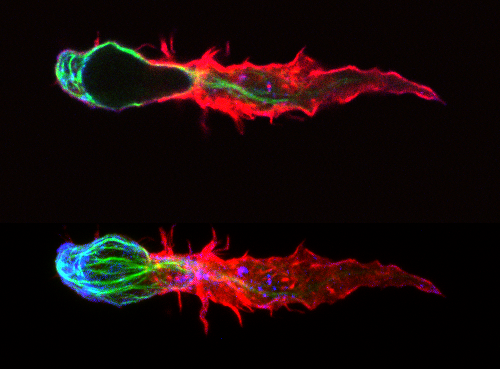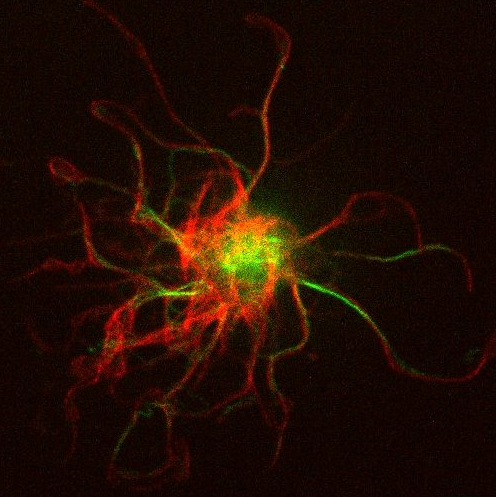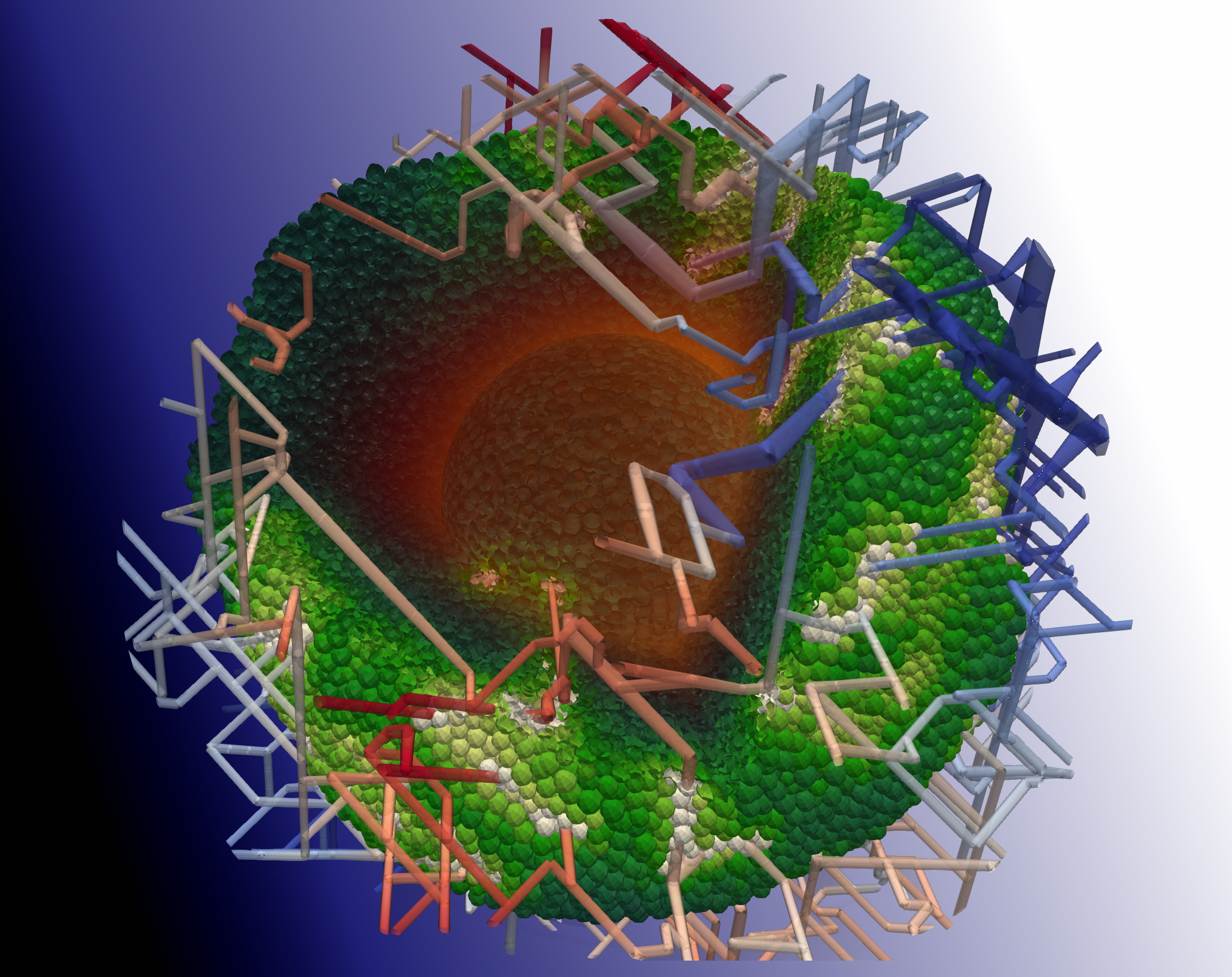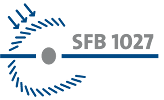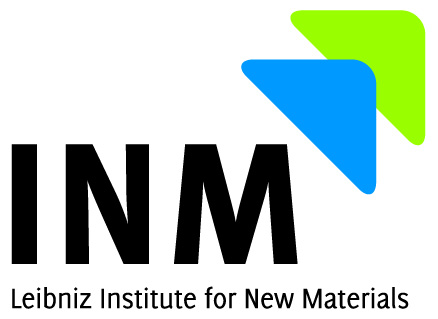| Mohammad Abu Hamed
|
Technion - Israel Institute of Technology |
A simple model of keratocyte interface dynamics |
| Dalia Alansary
|
Saarland University, Homburg |
Biochemical and electrophysiological approaches for studying the stoichiometry of ORAI channels |
|
Fern Armistead
|
University of Leed
|
Mechanical phenotyping of single cells using shear and inertial microfluidics
|
|
Christian Bächer
|
University of Bayreuth
|
Blood platelet formation - a biological Rayleigh-Plateau instability
|
|
Luca Barberi
|
LPTMS, CNRS, Université Paris-Sud, Université Paris-Saclay Orsay
|
ESCRT-III helical polymers deform membranes into helical tubes
|
|
Carles Blanch-Mercader
|
University of Geneva
|
Onset of 3D tissue morphogenesis near integer topological defects
|
|
Tobias Büscher
|
Forschungszentrum Jülich, Institute of Complex Systems II
|
Tissue Competition: Coexistence and Tumor Heterogeneity
|
|
Maamar Boukabcha
|
University Hassiba Benbouali of Chlef, Algeria
|
Study on some risk factors has a biophysical and biochemical aspect for some types of cancer in Algeria: case of Chlef area
|
|
Clément Campillo
|
Université d'Evry
|
Morphology and mechanics of membrane nanotubes interacting with reconstituted actin networks
|
|
Chii Chan
|
EMBL Heidelberg
|
A bottom-up approach to study the interplay between signaling and mechanics in early mammalian embryogenesis
|
|
Saptarshi Chatterjee
|
Indian Association for the Cultivation of Science, Kolkata
|
Microtubule search-and-capture mechanism orchestrates MTOC clustering and nuclear division
via proper spindle positioning in yeast
|
|
Indra Navina Dahmke
|
INM-Leibniz Institute for New Materials , Saarbrücken
|
Association of signaling active ErbB2 homodimers with actin-rich membrane structures of cancer
|
|
Christian Dietz
|
Institute of Materials Science, Technische Universität Darmstadt
|
Nanomechanical sub-surface mapping of living biological cells by force microscopy
|
|
Alessandro Falconieri
|
Department of Biology, University of Pisa, Pisa, Italy
|
Mechanotransduction of axonal growth: novel perspectives in
mechanobiology field
|
|
Oded Farago
|
Ben Gurion University, Beer Sheva
|
Interplay between membrane elasticity and active cytoskeleton forces regulates the aggregation
dynamics of the immunological synapse
|
|
Daniel Flormann
|
INM-Leibniz Institute for New Materials , Saarbrücken
|
Structural analysis of the actin cortex and its correlation to cell mechanics in adhered and suspended states
|
|
Joel Forster
|
University College London
|
Relating Surface Structure to Function in Cell Membrane Penetrating Nanoparticles
|
|
Thierry Fredrich
|
Saarland University, Saarbrücken
|
Fine-grained simulation of the microenvironment of vascularized tumors
|
|
Bob Fregin
|
University of Greifswald
|
Dynamic real-time deformability cytometry: High-throughput single cell rheology in complex samples
|
|
Sadegh Ghorbani
|
iNANO/CellPAT Center, Aarhus University
|
Restricting desmosomal assembly in interfollicular stem cells (IFSCs) via desmosomal protein
nanopatterns
|
|
Pau Guillamat
|
Universitè de Genève
|
Integer topological defects steer cell flows during tissue morphogenesis
|
|
Anne Hafner
|
University College London
|
Physical modelling of ESCRT-III mediated cell division in archaea
|
|
Hendrik Hähl
|
Saarland University, Saarbrücken
|
Hydrophobins: Model proteins and building blocks for lipid-free membranes and vesicles
|
|
Mitchell Han
|
INM-Leibniz Institute for New Materials, Saarbrücken
|
Optoregulated force application to individual cellular receptors using molecular motors
|
|
Stephanie Hoehn
|
University of Cambridge
|
Morphogenesis is stressful – Elasticity and Mechanics of Folding Cell Sheets
|
|
Miloš Ivanović
|
Saarland University. Saarbrücken
|
Interpretation of SAXS data using MD simulations: Detergent micelles and ion cloud of charged
proteins
|
|
Satoru Kidoaki
|
IMCE, Kyushu University Fukuoka
|
Exercising mesenchymal stem cells through nomadic culture on heterogeneous field of matrix elasticity
|
|
Yesaswini Komaragiri
|
Universität Greifswald
|
Role of oxidative stress on the cell mechanical properties of suspended and adherent cells
|
|
Julia Kraxner
|
Universität Göttingen
|
Recovery Behavior of Single Vimentin Filaments
|
|
Sebastian Kruss
|
Göttingen University, Germany
|
Entropic chromatin swelling drives complex cellular behavior
|
|
Nicholas Kurniawan
|
Eindhoven University of Technology, Eindhoven, The Netherlands
|
Entropic origins of substrate-guided cell morphology and alignment
|
|
Franziska Lautenschläger
|
Leibniz-Institut for New Materials, Saarbrücken, Germany
|
Vimentin provides the mechanical resilience required for amoeboid migration and protection of the nucleus
|
|
Aldo Leal-Egana
|
Universität Erlangen-Nürnberg
|
Confining cancer cells in 3D tumor-like microcapsules: A new strategy to induce tumor
heterogeneity in vitro, and to enhance extravasation capabilities in vivo
|
|
Ayelet Lesman
|
School of Mechanical Engineering, Tel-Aviv University
|
Mechanical interactionbetween cells in fibrous environments
|
|
Charlotta Lorenz
|
University of Göttingen
|
Lateral Subunit Coupling Determines Intermediate Filament Mechanics
|
|
Gabriele Lubatti
|
Helmholtz Zentrum Munich
|
Cell competition in mouse embryo
|
|
Karol Makuch
|
Institute of Physical Chemistry, Polish Academy of Sciences, Warsaw
|
Stokes' law in complex liquids and inside cell cytoplasm
|
|
Matthieu Mangeat
|
Saarland University, Saarbrücken
|
The narrow escape problem in a circular domain with radial piecewise constant diffusivity
|
|
Daniel Alejandro Matoz-Fernandez
|
School of Life Sciences, University of Dundee
|
Growth, form and active mechanics in biology
|
|
Cornelia Monzel
|
Universität Düsseldorf
|
Subcellular Transfer of Nanoparticles and Targeting of Organelles
|
|
Javad Najafi
|
Saarland University, Saarbrücken
|
Flagellar number governs bacterial spreading and transport efficiency
|
|
Daniel Pearce
|
University of Geneva
|
Geometry and mechanics of growing bacterial suspensions
|
|
Audrey Prunet
|
Institut Lumière Matière, Lyon
|
Soft cell confiner development to decipher the impact of mechanical stimuli on cancer cells
|
|
Sandaara Romanova
|
Moscow Institute of Physics and Technology, Dolgoprudny, Russian Federation
|
Stilbene derivative as a photosensitive compound to control the excitability of neonatal rat cardiomyocytes
|
|
Jakob Rosenbauer
|
Forschungszentrum Jülich
|
Multiscale Modeling of Tumor Development
|
|
Naruemon Rueangkham
|
The University of Sheffield
|
Intracellular transport by molecular motors: the effect of number of binding sites
|
|
Shrikrishnan Sankaran
|
INM - Leibiniz Institute for New Materials, Saarbrücken
|
Bacterial confinement in hydrogels to develop living therapeutic materials
|
|
Anna Schepers
|
University of Göttingen
|
Tuning the mechanics of single intermediate filaments
|
|
Reza Shaebani
|
Saarland University, Saarbrücken
|
Dynamics, correlations, and search optimization in active processes with distinct motility states
|
|
Ewa Sitarska
|
EMBL Heidelberg
|
Towards understanding the role of BAR domain proteins in membrane tension sensing
|
|
Kristina Sliogeryte
|
Queen Mary University of London
|
Cell mechanical properties in keratinocytes are regulated by cell-cell adhesions
|
|
Christian Spengler
|
Saarland University, Saabrücken
|
Single-Cell Force Spectroscopy to Study Bacterial Adhesion: Fundamental Mechanisms and Effect of Substrate Nano-Topography
|
|
Baeckkyoung Sung
|
KIST Europe, Saabrücken
|
Dynamics of immune cell morphology and motility on a topographical surface with controlled
elasticity
|
|
Hans van Oosterwyck
|
KU Leuven
|
Sprouting angiogenesis relies on tip cell pulling forces
|
|
Diego Vargas
|
KU Leuven
|
Effect of substrate stiffness on balance of active cell-cell and cell-ECM forces studied through a
computational model of a deformable cell pair
|
|
Gerrit Vliegenthart
|
Institute for Advanced Simulation, Forschungszentrum Jülich
|
Filamentous Active Matter: Band Formation, Bending, Buckling, and Defects
|
|
Andreas Weber
|
University of Natural Resources and Life Sciences Vienna
|
Does estrogen receptor drug binding influence breast cancer cell viscoelasticity?
|
|
Jiawei Yan
|
Harvard University, Cambridge
|
Kinetic uncertainty relations in stochastic control
|
|
Guanming Zhang
|
University of Oxford
|
Collective behaviour of epithelial cells under different coordinated dynamics of cell polarisation
|
